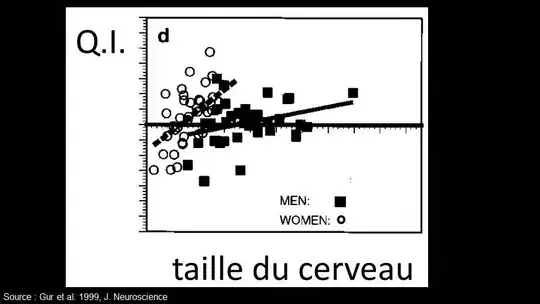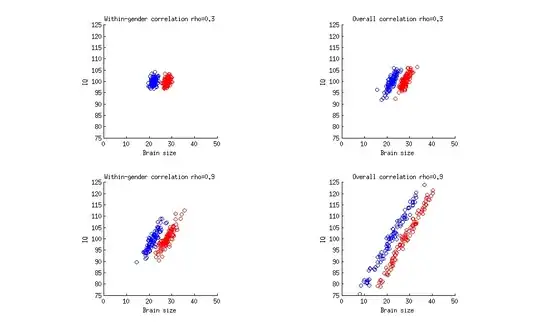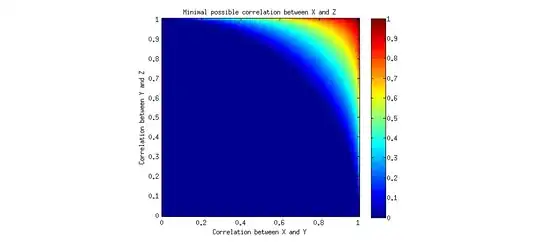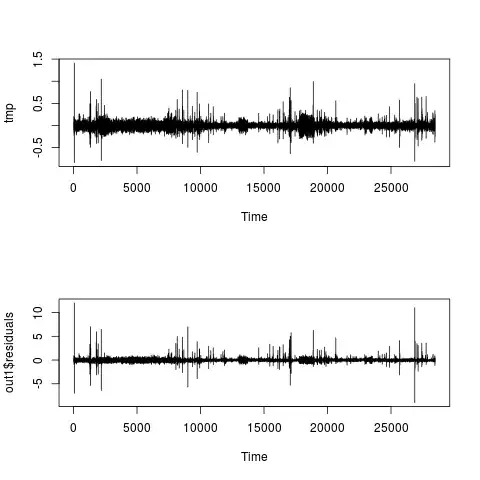I found a following explanation on a blog and I would like to get more information about the non-transitivity of correlation:
We have the following indisputable facts:
- On average, there is a difference in brain volume between men and women
- There is a correlation between IQ and brain size; the correlation is 0.33 and thus corresponds to 10% of the variability of IQ
From these premises 1 and 2, it seems to follow logically from that: women on average have a lower IQ than men. But it is a fallacy! In statistics, correlations are not transitive. The proof is that you just need to look at the results of IQ tests, and they show that the IQ of men and women do not differ on average.
I would like to understand this non-transitivity of correlation a bit deeper.
If the correlation between IQ and brain size was 0.9 (which I know it isn't (1)), would deducing that women on average have a lower IQ than men would still be a fallacy?
Please, I am not here to talk about IQ (and the limits of the test), sexism, woman stereotype, arrogance and so on (2). I just want to understand the logical reasoning behind the fallacy.
(1) which I know it isn't: Neanderthals had bigger brains than homo sapiens, but were not smarter;
(2) I am a woman and overall, I don't consider myself, or the other women less smart than men, I don't care about IQ test, because what count is the value of people, and it's not based on the intellectual abilities.
The original source in French:
On a les faits indiscutables suivants:
- il y a une différence de volume cérébral en moyenne entre hommes et femmes
- il y a une corrélation entre QI et volume cérébral; la corrélation est 0.33 et correspond donc à 10% de la variabilité
De ces prémisses 1 et 2, il semble découler logiquement que: les femmes ont en moyenne un QI inférieur aux hommes.
Mais c'est une erreur de raisonnement! En statistique, les corrélations ne sont pas transitives. La preuve, c'est que pour en avoir le cœur net, il suffit de regarder les résultats des tests de QI, et ceux-ci montrent que les QI des hommes et des femmes ne diffèrent pas en moyenne.




